For a couple of years, I have happily volunteered to help my friend Carmaine do a mammoth bake-off of biscotti, which she bundles up and distributes to her many, many friends at Christmas. She has a whole bunch of recipes. While she and a friend make batches of dough, I man the other side of the counter, shaping, baking, slicing and re-baking. As is often the case, I do this pretty much by the seat of my pants. All Carmaine’s collected recipes differ slightly, so some of the cookies are hard and crunchy, some quite tender, some easy to slice, some difficult.
After last year’s marathon, my compulsive nature cut in, causing me to search out all my favorite resources for biscotti clarification. Wouldn’t it be great, I thought, to come up with just one basic, reliable dough, which could be flavored in any number of ways?
Here’s what I learned. Italians traditionally make their biscotti without any fat – just what comes in the egg yolks. They want that “must be dipped in coffee or wine” texture, and that’s surely what I got when I made a batch using a very traditional recipe. You could ruin your dental work if you tried to munch on these for a quick breakfast in the car.
Italian immigrants and Americans returning from “the war” brought several Italian staple foods with them, like pizza and Spaghetti Bolognese, and I’m guessing biscotti made that same trip. Americans had a different opinion of what they wanted in a cookie, and added butter to the batter to make their version of biscotti more tender. That made sense – the more butter in the batter, the more biscotti were like any other cookie – easy to enjoy alongside a cup of coffee, without the necessity of softening by dipping them in it. They got a little fragile, though. How much butter was enough?
Sugar in baked goods acts as a tenderizer too. It attracts water, and modifies the formation of gluten. I didn’t want to go overboard with the sugar – I prefer a cookie that’s not too-too sweet.
And then I got to thinking about what flour is like in Italy. It has a lower percentage of the proteins that form glutin; it’s considered “softer”. American all-purpose flour is on the soft side too. Canadian all-purpose flour is more like American “bread flour”, considered “stronger”. I had done quite a bit of experimentation with pizza dough, adding a little pastry flour (the softest flour we have) to all purpose flour to achieve the desired texture. When I applied the same principle to biscotti dough, sure enough, I got exactly the consistency I was looking for.
And then, of course, I cut the recipe in half. I mean really, how many biscotti do I really need? They last in an air-tight container in the cupboard for at least 2 weeks. My little batch doesn’t even need a mixer. Note the need to manage your time: you can get plenty of other things done (like the laundry) while biscotti bake, rest, and re-bake.
Give this a try. I’ll add a few pointers as we go along.
Biscotti
Ingredients:
- 2 Tbsp butter, melted and cooled
- ½ tsp vanilla
- 1 large egg (don’t mess around – size matters)
- Pinch of salt
- 1 tsp baking powder
- ½ cup sugar
- ¾ cup all-purpose flour
- ¼ cup pastry flour. You can certainly use just all-purpose flour. You might want to dunk the biscotti, though.
- Up to 1 cup sliced or chopped nuts – any kind at all There’s a reason for this. First, the “slicing-the-cookies” part of production is much easier if the nuts are in pieces, rather than whole. Second, the chopped nuts help keep the gluten strands a little shorter, so the finished cookies are less like concrete. I know, I know — sometimes you want that swell visual of the sliced whole nut. Head to the bakery if that’s what you’re looking for. At home? Give yourself a break! Oh, and they usually toast during the twice-baking; another time-saver.

Method:
In a deep bowl, whisk together the melted butter, vanilla and egg.


Mix in the salt, baking powder, and sugar. This ensures that the baking powder will be evenly distributed throughout the dough. It also makes this a one-bowl recipe.


Mix in the flour and the nuts. Start with a wooden spoon, and if the dough is too stiff, get your hands in there. Sometimes, if the flour is very dry, or the egg isn’t particularly large, you may need to add a little moisture. Just a few drops of water will likely be enough. On the other hand, if you use an extra-large egg, or are generous with the butter, you may need to add a couple of tablespoons of additional flour. When you make a small batch, accuracy in measurement is very important. You’re looking for a texture very much like playdough – a little sticky, but easy to handle.


Using your hands, shape the dough into a “loaf” about 10 inches long, 4 inches wide, and half an inch thick. The dough will spread itself, so you can leave the edges quite square. I shape my loaf like a parallelogram, so more of my diagonal cuts are the same length than if I made an oval or a rectangle. That’s just me. You can go more free-form if you like. If you want to make “baby biscotti”, divide the dough in half and make two skinny strips, both 10 inches long.

Bake the dough in a pre-heated 350°F oven for 25 – 30 minutes (less for baby biscotti — about 20 minutes). It needs to be pretty firm to the touch, but only lightly browned. If you take it out too soon, it will compress when you slice it and give you tough biscotti. If you leave it in too long, the dough will shatter when you cut it.

Oven Temperature Accuracy: It’s a good idea to invest in an oven thermometer to check if your oven is telling the truth when you set it to 350°F. If your oven is still under warranty, a service man can be called in to calibrate it, and it will stay accurate for a while. If it is no longer under warranty, you may have to pay quite a bit of money just to get the guy to grace you with his presence, so you may want to do what I do, and set your oven for 375° to get an actual temperature of 350°. You can use that oven thermometer to see if your oven has hot spots too, although it’s pretty easy to tell where they are if your cookies don’t brown evenly. My oven uses both the lower heat source and the broiler element to bring itself up to temperature, a little fact I tend to forget until I try raise the temperature mid-bake in an effort to hurry something along, and incinerate whatever it was I was cooking.
Let your half-baked cookie bar cool for at least 20 minutes. Premature slicing seems to be the principal cause of biscotti breakage – the structure isn’t stable until it’s almost at room temperature. It’s drying out all the time it’s cooling, so don’t wait forever.
While the bar is cooling, drop your oven temperature to 300°F. Leave the oven door open for 30 seconds to help this process along. A modern self-cleaning oven is so well insulated, it can take forever to cool down.

Using a serrated knife (that’s a bread knife) slice your cookie loaf into strips, about half an inch wide. Traditionally this is done on the diagonal, so you get those lovely tapered tips. You can slice straight across if you want to. If you’re making “baby biscotti”, I actually recommend slicing straight across. The more nuts (and other things) you have in your batter, the more easily your strips will break apart. If they do, push the broken edges together for the re-baking, and they may “bond” – no guarantees, though.

Carefully move your cut strips onto an oven-safe rack, leaving spaces in between the strips. Yes, you can put them back on a cookie sheet, but the rack really works better. Return them to the 300°F oven for 20 – 30 minutes, or until they are crisp and nicely browned.


Leave them on the rack until they cool to room temperature. At that point, they should be sturdy enough to conduct the hand-bell choir with. Store them in an airtight container at room temperature for up to a week, or freeze them for eternity. The yield on this small recipe is great – you can eat them all in the course of a single day if you really work at it!

Options: Flavor combinations are entirely up to you — go wild! Pine nuts! Walnuts! Macadamia nuts! What’s your budget?
If you want to add different flavor extracts, like almond or anise, switch them out for the vanilla. You may need to experiment a little to get just the right amount.
Orange or lemon zest adds wonderful flavor – you can add a teaspoon or more, remembering that “more” will wander into bitter flavor notes. Lime or grapefruit zest is good, but be sparing.
If you want to use liqueur as a flavoring agent, like pernod or anisette, use up to a tablespoon in place of the vanilla. You may need to add just a bit more flour to get that playdough texture.
Don’t feel you HAVE to use nuts. You can make lovely biscotti by using good quality vanilla and a wide variety of spices, from cinnamon to sumac. Herbs like rosemary and dried basil are very nice, especially when combined with a bit of citrus zest. Add herbs or spices into the egg/sugar wet mix to ensure even distribution.
Chocolate biscotti requires a simple substitution: Use 2 tablespoons of cocoa and 2 tablespoons of pastry flour in place of the 1/4 cup of pastry flour. Done!
You can add about half a cup of “additional flavor” ingredients, like dried fruit or mini-M&Ms. Chopped chocolate, or mini chocolate chips are ALWAYS a hit. Skor bits are really good too, especially with a bit of cinnamon added to the batter. Coconut or sesame seeds can add texture as well. Add your “additionals” with the nuts, or in place of the nuts.
Garnish, anyone? Melt a little chocolate in a freezer bag, either at low power in the microwave, or in a bowl of warm water. Snip off the bottom corner, and drizzle the melted chocolate over the cooled biscotti. This is very easy to do while they’re still on their baking rack – just push them together and zig-zag away. You could make a little icing-sugar-and-lemon-juice glaze, and administer it the same way. The photo shows icing — I blew my chocolate budget on Nanaimo Bars.
You can add sprinkles while the chocolate or icing is still setting up, or the ever-so-trendy sprinkling of finishing salt (probably not great with the icing).
The drizzle is a whole lot easier than trying to dip the cookies in chocolate, but you can do that if you’re absolutely obsessed. I recommend using a good quality wafer-type dipping chocolate for fool-proof results (especially if you want the white-chocolate effect: white chocolate is notoriously difficult to work with). Melt it in the microwave on low power in a glass pie-plate for easy application, and have parchment-paper topped cooling racks waiting to set the dipped cookies on while the chocolate hardens.


Gluten Free Option: I did do a trial-batch with gluten-free flours. I used brown rice flour and tapioca starch in a 3:1 ratio, and added ½ tsp xanthan gum. I’m certain the pre-fab gluten-free flour blends would work just fine in a straight swap for wheat flour. Because of the absence of gluten, the texture of the biscotti is quite different (slicing is significant challenge; maybe a little more xanthan gum was required), but the method is essentially the same. I would recommend using add-ins with lots of character, as the taste of toasted flour is an important component in the flavor profile of traditional biscotti.
Make your biscotti plain or fancy, everyday or party perfect. Have a good time using this basic recipe to create your signature treats.

Click edit button to change this text.
Click edit button to change this text.
Click edit button to change this text.



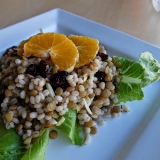
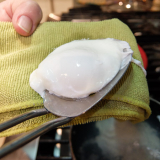
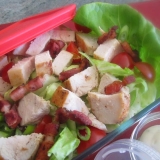
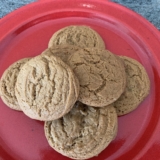
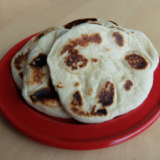
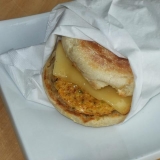
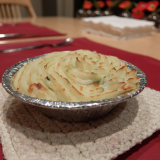
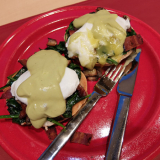
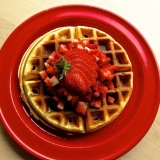
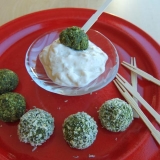

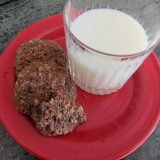
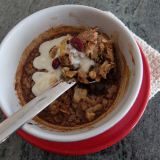
Leave A Comment